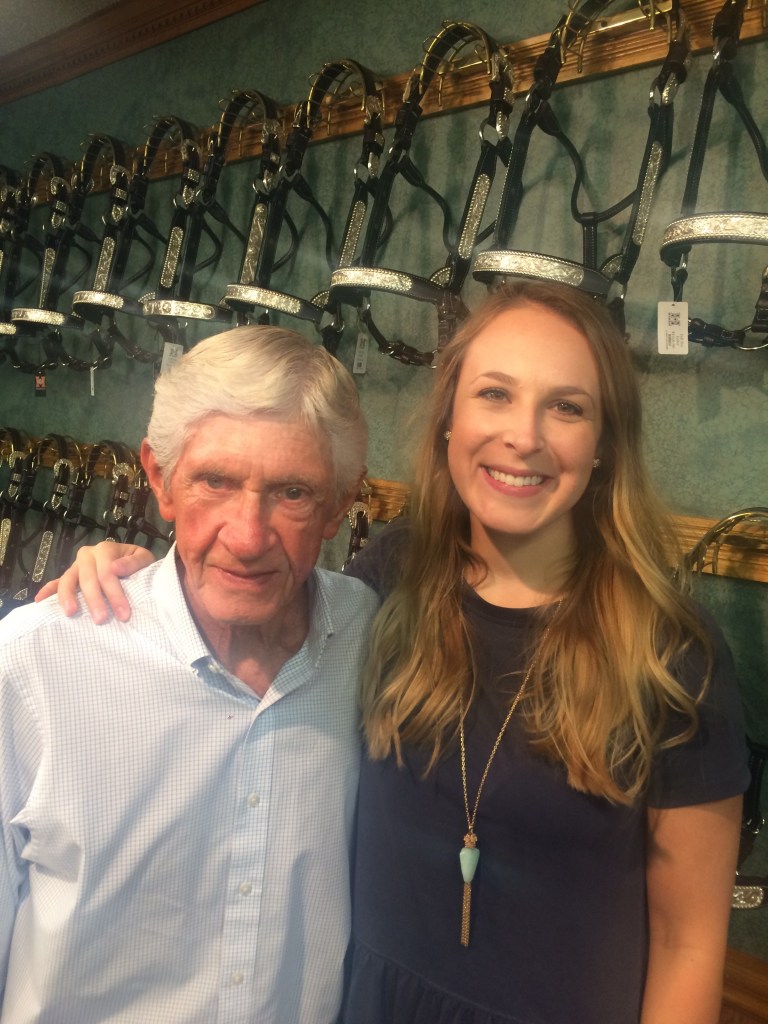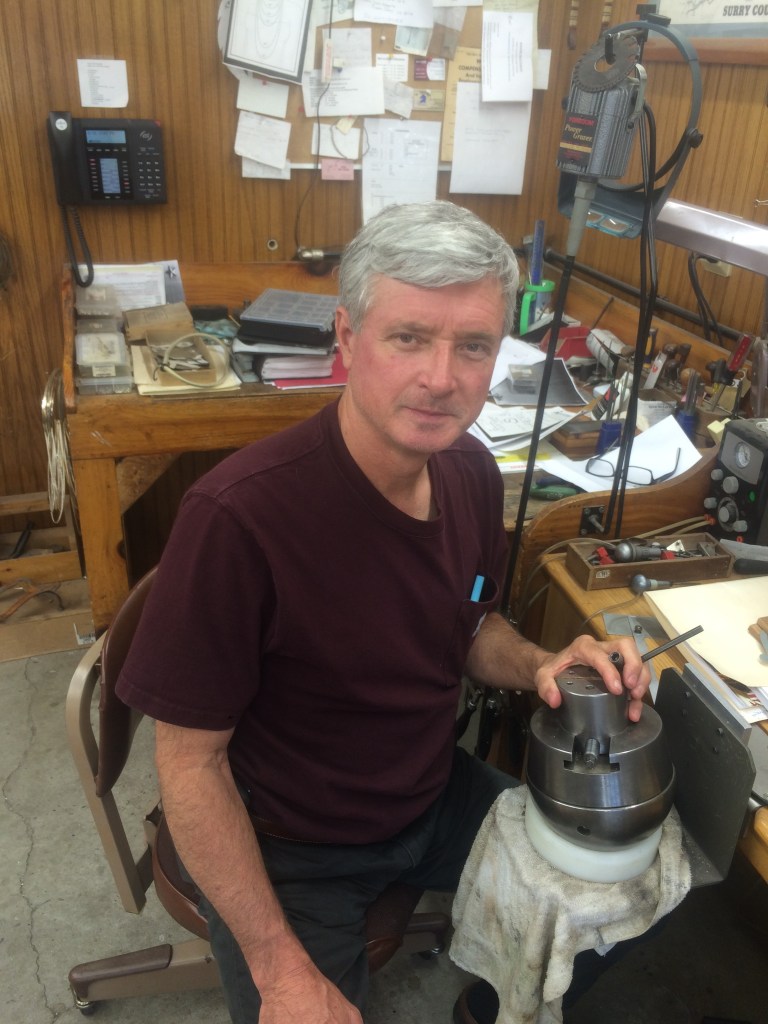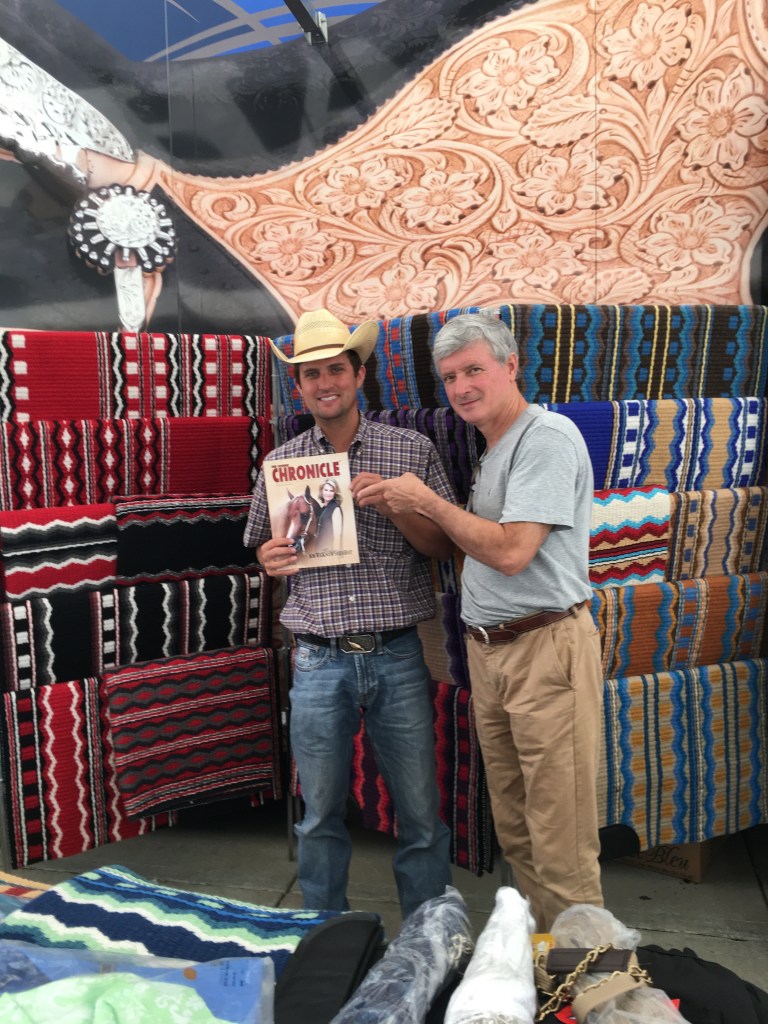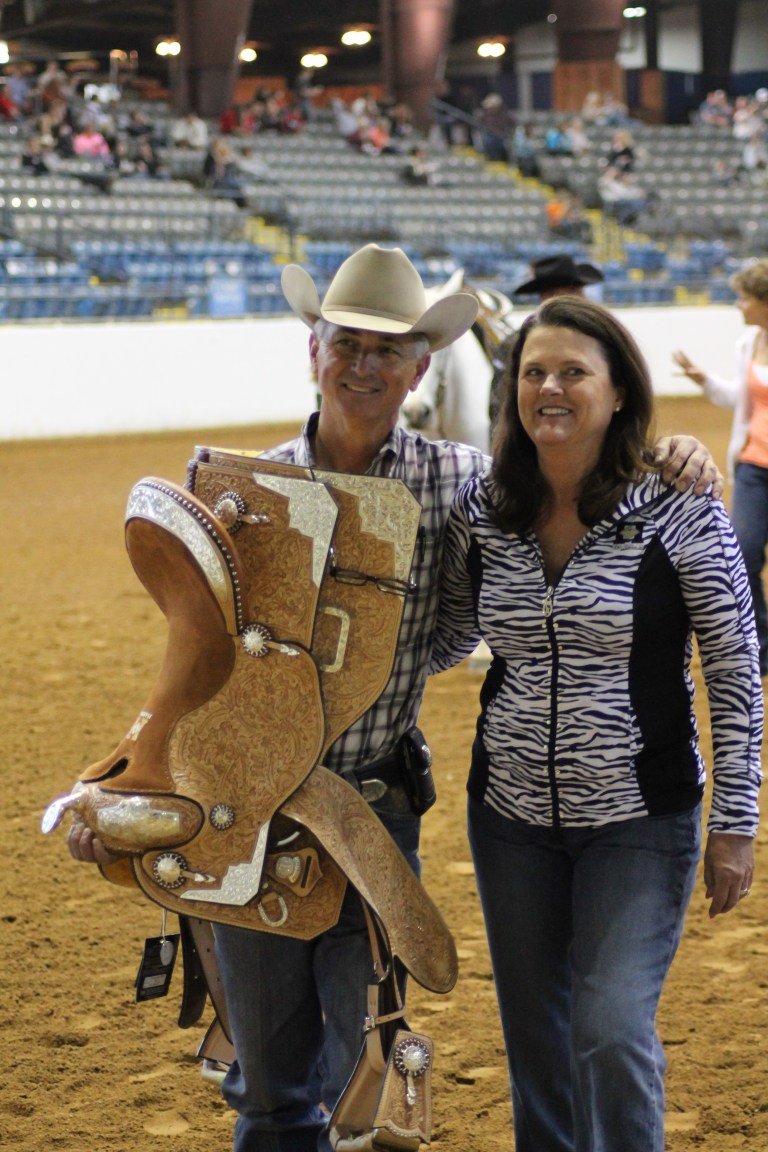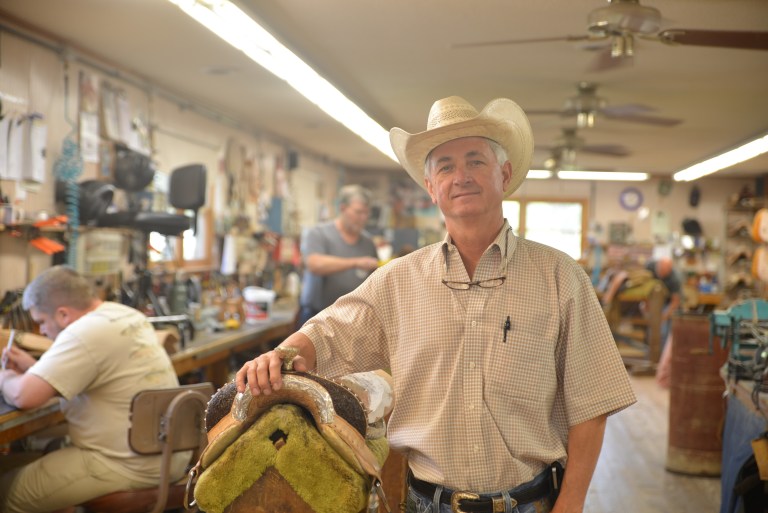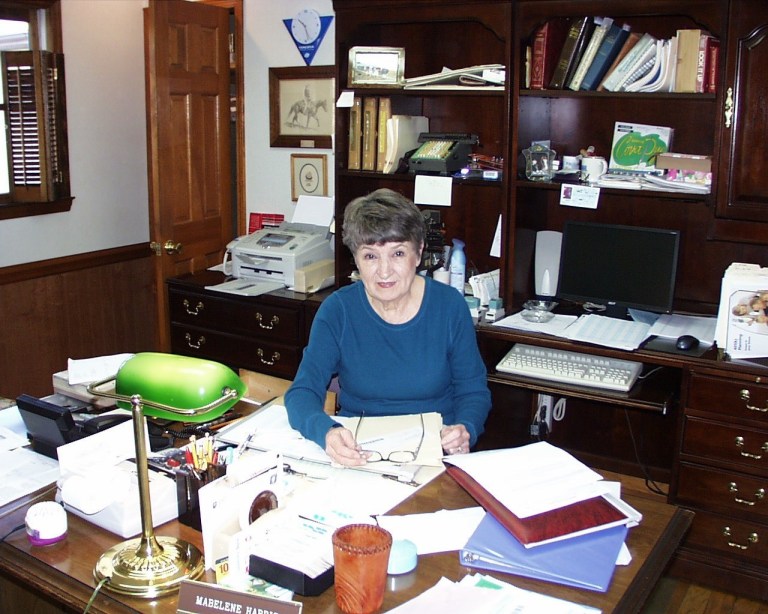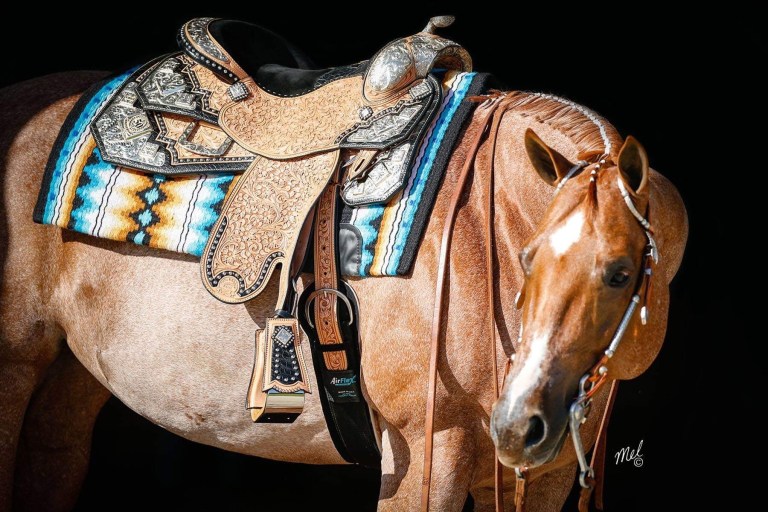
Harris Leather & Silverworks sets the standard for the show horse community
By Lynn Ascrizzi
Anyone deeply involved in big-time show horse events, such as The All-American Quarter Horse Congress,is well aware of the stature of Harris Leather & Silverworks and their hand-built, silver-spangled saddles and other artfully craftedleather tack.
“Our saddles and silverwork are what keep customers coming back and looking for that one-of-a-kind piece of show equipment,” said Phil Harris, who co-owns the business with his brother, Eddie Harris.
“I think our ability to customize and make products on a very high-quality level is unique,” Eddie added. “The customization is what separates our business from others — that, and the fact that we make everything under one roof.”
A gifted silversmith, Eddie directs the company’s silverworks shop. Phil, a highly accomplished saddle maker, heads up the leather workshop. Together, they share the duties of running the company, while maintaining their uniquely individual roles. “We both do what we need to, to get the job done,” Phil said.
Besides highly-decorative, custom products, the business also offers work saddles and other working equipment. But, the more ornate items are the company’s big draw. “Our customers are primarily the western show person who shows on a national level. We service associations related to the quarter horse, Arabians and like breeds,” he noted.
“The quarter horse show industry is primarily our bread and butter,” Eddie said. According to recent data from the American Horse Council, more than one million quarter horses are used specifically for showing purposes.
Their customers come from all walks of life and socio-economic status. Women make up two-thirds of sales. “The (show horse) market is primarily driven by women. They’re the ones who try the market,” Eddie said. “A horse and a girl are natural friends,” Phil added. “Their interests are definitely horses.”

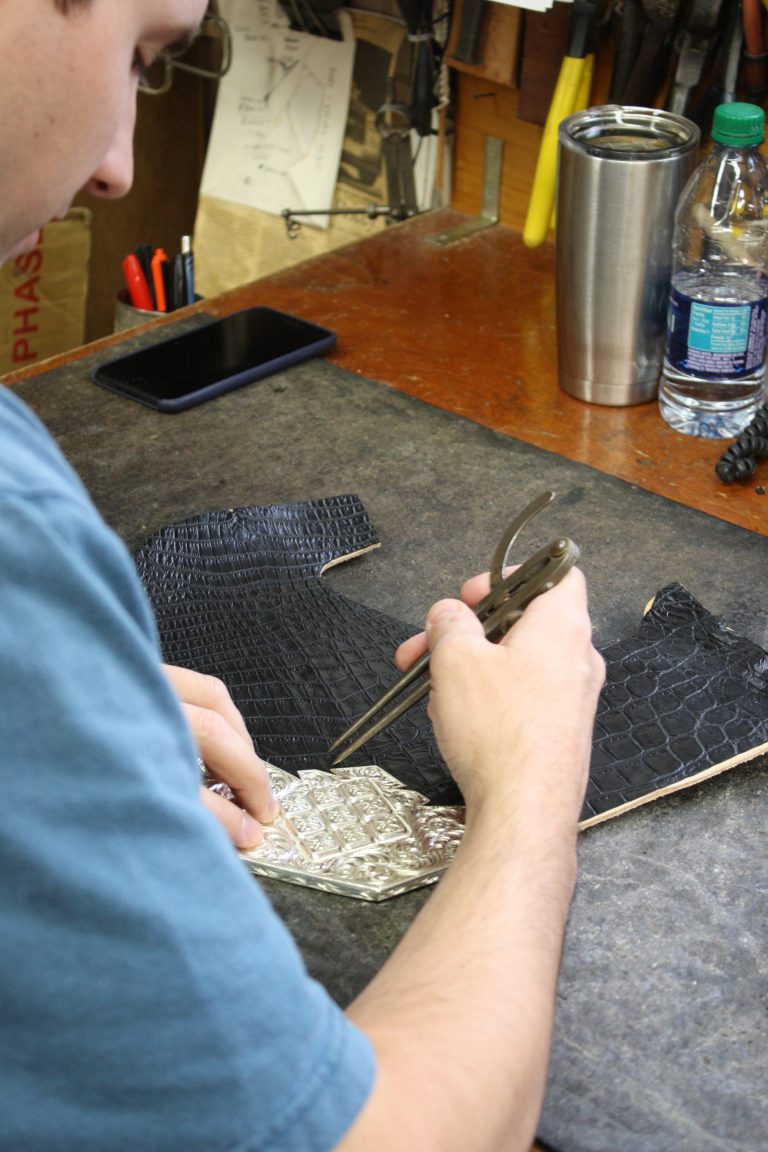
IN THE WORKSHOPS
The company, located in the foothills of the Blue Ridge Mountains, in State Road, North Carolina, occupies a 10,000-square-foot manufacturing facility. Saddles, headstalls, halters, working tack, spur straps and engraved silver, for all Harris saddles and tack, plus buckles and jewelry, are made there. The workspace includes a 12,000-square-foot separate warehouse.
The leather and silver workshops occupy their own distinct areas in the building. “We also have a showroom in front for walk-ins, who make up a smaller portion of sales,” Eddie said.
He makes silver products; his daughter, Mary Gwyn, designs the silver spurs that the company produces. Imported working spurs are also sold. “We manufacture about 85 percent of all silver products in-house, run the silver shop and make sure customers get what they want,” he said.
Even though the business is off the beaten track, in a rural setting, the retail store has a long history of attracting customers, many of whom plan special trips and travel a long distance to see the shop. Visitors include senior and school groups and civic clubs.
During normal operations, the company has 30 employees. “A group of employees are dedicated to each of our areas of production,” Phil explained. Generally, his leather shop employs 22 skilled workers.
Regarding shop tools – “Most of our sewing is done on Union Lock-Stitch machines. They’re pretty much bulletproof. We have a large Fortuna band knife splitter. And, we use hydraulic clicking presses, a spot setter and a myriad of hand tools. Some machinery is really old, like the 1875 creaser,” he said.
The silverwork side of the business offers a complete manufacturing line in silver and gold. “We do a tremendous amount of casting and wax model carving — one-of-a-kind pieces sent over the world to customers in Europe and Australia and to all 50 states. Most of that work also revolves around the horse industry,” Eddie said.
His workshop employees include silversmiths and engravers. “We use Glendo hand engravers and other tools and machines, as well as a lot of jewelry-related tools. We use a phenomenal amount of hand tools. Sometimes we make our own. And, we buy from traditional jewelry supply houses, like Gesswein in Bridgeport, Connecticut, and Rio Grande (Jewelry Supply), in Albuquerque, New Mexico,” he said.
The silver shop’s most modern machine is a laser welder, used to tack pieces together. Other tools include punch presses, kick presses, benders, ironworkers and many different types of shears for cutting silver.
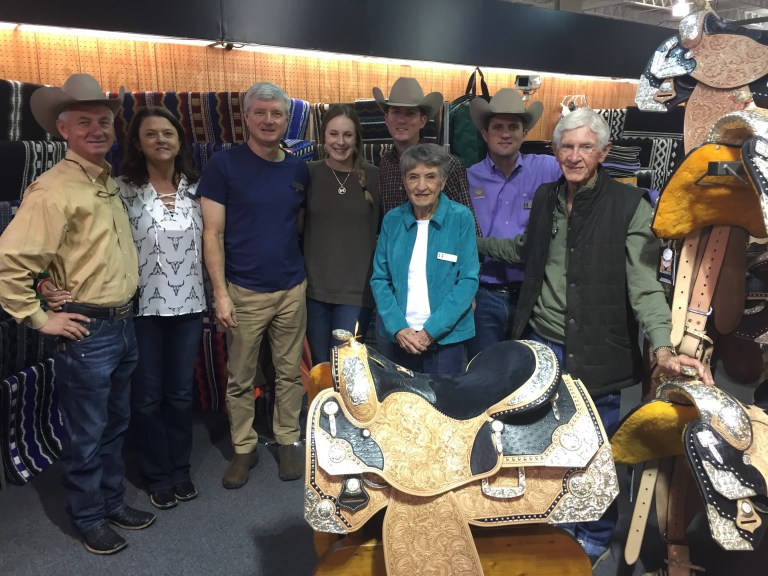
WORKING TOGETHER
Ralph and Mabelene Harris, parents of Phil and Eddie, founded the three-generation family enterprise in 1968. “As with most small businesses, the evolution was very slow and premeditated. We were a horse-showing family and have a love of horses,” Phil said. “Mother learned to carve leather during the ‘hippie’ era of the Sixties. She and dad made belts and purses to sell to friends at the horse shows.”
Since the family showed horses, their handcrafted bridles, halters and headstalls were also made for themselves. Soon, friends noticed the quality of their work and started to ask Ralph and Mabelene to make equipment for them. “Before you knew it, they were off and running. This allowed them to pursue what they loved, while making extra money to fund our horse showing,” he said.
“We loved being on a farm with show horses, broodmares and cattle. We both rode and showed, growing up,” he recalled. “We just learned how to ride from our parents,” Eddie said. “We learned independence,” Phil added, “so joining a business that we loved and knew well was only natural.”
Today, eight family members with the surname Harris work in the business. Phil and Eddie’s dad is a strap goods maker; their mom takes on accounting and clerical duties. Phil’s wife handles human resources and also works in accounting. Eddie’s daughter, Mary Gwyn Harris, is responsible for internet technology, accounting and customer service.
And, Phil’s two sons work with the company: Preston is a saddle maker and production manager, Stanton’s expertise also includes IT work, sales, marketing and customer service. “Everybody wears a lot of hats,” Eddie said.
Saddle cleaning is another company service. Throughout the year, Preston and Stanton provide that service at several horse shows. Harris customers are given instructions on how to care for and clean their saddles, and tack cleaning products are sold.
“We are a close-knit family. We all realize that we have built a very special business,” Phil reflected. “We taught our children that, if they work hard here, they could be with family and live where they grew up. Not many children have the opportunity to enter a successful, family-run business. They have joined in and are taking it to the next level.”



SADDLE UP!
The amount of time it takes to make a Harris saddle varies with its complexity. “A lot of variables are involved, which include the tooling pattern and the amount of silver and exotic inlays, to name a few. It is not uncommon to have over 200 man-hours in a basic silver saddle,” Phil said.
All sales are retail. Custom Headstalls and halters average $1,300. Saddle prices vary with the amount of custom work and complexity involved. A work saddle with rough-out construction starts at $2,995. The average median saddle price is around $12,000.
Special custom saddles can be tagged much higher. One elegant example, handcrafted with a black alligator, a black suede seat and enhanced with intricate silverwork, was priced at the company website for $25,595. “We do not have an upcharge for a custom saddle,” Phil noted.
Like the saddles, custom silver and gold work prices also depend upon the complexity of the piece, for instance, if they include semi-precious and precious stones. “A belt buckle can be priced from $250, for a very simple three-piece design,to $5,000, for a highly customized belt buckle unique in design, that has gold logos or lettering and is highly hand-engraved,” Eddie said.
Products in the Harris leather shop are produced from U.S. cowhide, largely sourced from two U.S. tanners. “Some filler leathers from Mexico and South America, and some imported exotic leathers like ostrich and crocodile, are also used,” Phil said.
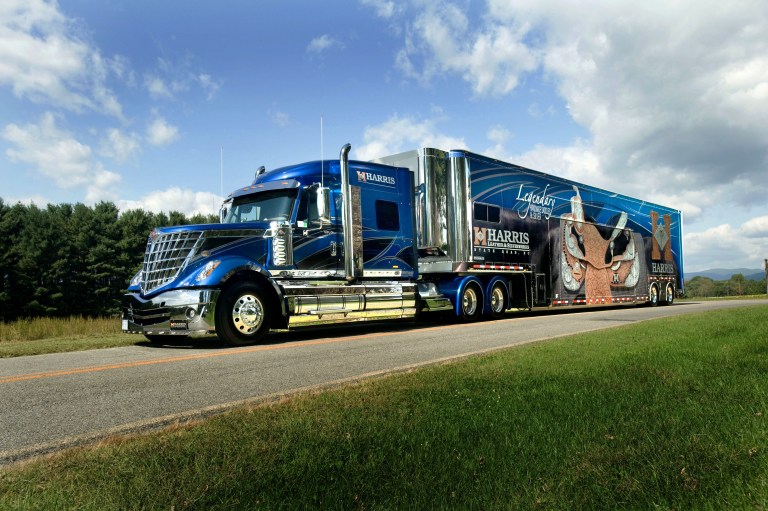
A SUDDEN TURN</h2
In 2019, Harris Leather & Silverworks was honored by Show Horse Today, with two Gold Reader’s Choice Awards — for best Western Saddle and Best Halter/Headstall Maker, for the fifth year in a row. They also took Silver and Bronze awards in further recognition of the company’s outstanding contributions to the industry.
This past spring, however, only a year after being honored with those well-earned accolades, the company was forced to close its doors. “We shut down, per the governor’s orders, for the first time in our history,” Phil said. The sudden shutdown was a direct result of the deadly global pandemic, now known all too well as COVID-19. “We pretty much closed our doors to do our part to fight the coronavirus,” Eddie added.
Ordinarily, Harris Leather & Silverworks attends 8–10 show horse events, per year, such as the All-American Quarter Horse Congress. “It’s the largest horse show in the world, held in Columbus, Ohio, each October. We are there for the entire month,” Phil said.
But by early April, the National Snaffle Bit Association (NSBA) reported that a number of U.S. show horse events slated for that month had been canceled. At the time, the NSBA was working with show managers to reschedule or postpone events, although many shows remained canceled.
Phil serves on the board of directors for the association, whose stated mission is to grow the show horse community through a variety of equine programs and events that benefit horses, breeders, owners and exhibitors alike.
“The NSBA is very important to us,” he said. “This national association sanctions and sponsors shows. It gives competitors a reason and a goal to want to show horses. Without organizations like this and the AQHA (American Quarter Horse Association), which offers a world championship show, our company would not have nearly as many customers.”
Despite the huge uncertainty of the times, both Phil and Eddie posited hope and determination. “We’re optimistic that by summer, the horse show scene will be in full swing again,” Eddie said.
At the time of this writing, the company embraced plans to attend horse shows —“all that we can, at this point,” Phil affirmed. “We have prepared and built a stable business throughout the years. Meanwhile, we plan to offer some additional sales and discounts to encourage the potential customer.
“Harris Leather & Silverworks has evolved and grown through the years due to the cooperation and hard work of the Harris family,” he continued. “We are very proud of the reputation we have earned in the industry, and we strive every day to do our best.”
NOTE: You can check out the latest updates at harrisleather.com
THE MAKING OF A SILVERSMITH
“We live in the Blue Ridge Mountains,” said expert silversmith Eddie Harris, who directs the silver shop at Harris Leather & Silverworks located in State Road, North Carolina. “If you need something, you make it. We built our shop, built the house and use our hands to make things. That is the culture I grew up in.”
In 1984, after he graduated from Appalachian State University in Boone, North Carolina, he wanted to go into the family business. But, he didn’t know what form or fashion his role would take. He reckoned that the only products that the family business didn’t manufacture, at that time, was the silverwork.
“Back in those days, there were no videos, no computers, no YouTube, no schools or guilds that taught these things. You had to learn by trial and error, or from an antiquated book,” he recalled.
He also knew that nobody was going to openly share his or her closely held trade secrets in engraving and silversmithing. For a while, he kept his wishes on the back burner. But one day, at a horse show in Montgomery, Alabama, he met a jewelry artist named Ann Beard, who knew how to cast silver and gold and to set stones. She invited him to her store. “She said, ‘Eddie, you can make everything in here. You can do it yourself,’” he said. She asked him to work with her.
Although jewelry making is a distant cousin to the type of silverwork and engraving applicable to saddles and bridles, he realized that learning those skills would head him in the silverwork direction he wanted to go.
After he spent a few weeks learning jewelry-making techniques with Ann, she encouraged him to attend Holland Jewelry School, in Selma, Alabama. He took the month-long course. Later, Ann told him that she knew someone who might be able to help him with engraving.
“She picked up a phone and called a gentleman who lived in Little Rock, Arkansas, named Tilden Swenson, who was in his 80s and retired. Tilden did jewelry engravings of coats of arms, rings and styles of lettering popular at the turn of the last century. He agreed to take me on for a week. He taught me how to engrave beautiful letters and monograms and ciphers, in an Art Deco style applicable to jewelry. He was a master,” Eddie said.
When he got back home, he acquired the tools he needed and went to work. “I’d sit at a bench in dad’s shop and practice my engraving. You have to have the desire and understand the concepts of designs, like vines and florals. Dimension is everything in art.”
Eddie’s silverwork achieved a level competent enough that his father was able to sell it. And, he was making buckles, too. Then, on another amazingly fortuitous day, the phone rang. It was Mike Berg of Belen, New Mexico, a silversmith and engraver. He had learned under the late Tom Taylor, a saddle maker and silversmith in Santa Fe.
“Mike said, ‘I understand you’re trying to do silverwork and are learning through trial and error.’” He made me an offer. “For $2,500, you can come to New Mexico, stay at my shop to live, and I will teach you what I know.”
Eddie didn’t hesitate. “Mike was a wonderful person and a great help. I was very fortunate. I worked on silverwork for two months.” Before he left for home, Mike asked him to make a belt buckle. “He told me, ‘You’re going to have to push all the engraving by hand.’ “
“I made that belt buckle. It turned out really beautiful.”
NOTEWORTHY HARRIS TIMELINES
Harris Leather & Silverworks, based in State Road, North Carolina, has been steadily growing and evolving for three generations. Only 30 percent of family-run companies make it to the second generation; only 13 percent make it to the third.
Here are some key highlights, shared by company co-owner Phil Harris:
1968 — Ralph and Mabelene Harris begin the business.
1973 — The enterprise moves from the kitchen table to the basement of the new family home. Lots more space!
1978 — Ralph quits his executive job at Central Telephone Co., after 20 years with the company, to pursue his dream of making tack. His son, Phil Harris, graduates from high school and Phil’s brother, Eddie, graduates the following year.
1982 — Phil graduates from Pfeiffer College and comes home to make tack. He builds the first Harris saddle — a smooth outer skirt with a cherry wood finish. It sells at the first horse show he takes it to.
1983 — Phil hires the family company’s first employee.
1984 — Eddie graduates from Appalachian State University. He comes home to learn the jewelry and silver business. After being mentored by master jewelry makers and silversmiths, he begins to make the silverwork needed for Harris tack and saddles.
1989 — The business has its first exhibit at the All-American Quarter Horse Congress.
1995 — The workshop is expanded, increasing to 10,000 square feet.
1997 — Phyllis Harris, Phil’s wife, joins the business full time.
2010 — Phil’s son, Preston, graduates from Pfeiffer University and comes home to make saddles.
2011 — The company’s newest show truck and trailer hits the road to the biggest quarter horse shows in the nation.
2012 — Phil’s son, Stanton, graduates from High Point University and returns home to work in the family business.
2013 — Mary Gwyn (Eddie’s daughter) graduates from Appalachian State University and comes home to the family business.
2018 — Harris Leather & Silverworks celebrates its 50th anniversary.
You can find Harris Leather & Silverworks in our listings for English & Western Tack.
This article originally appeared on Shop Talk Magazine and is published here with permission.
There's more interesting stories in our section on Tack & Farm.







